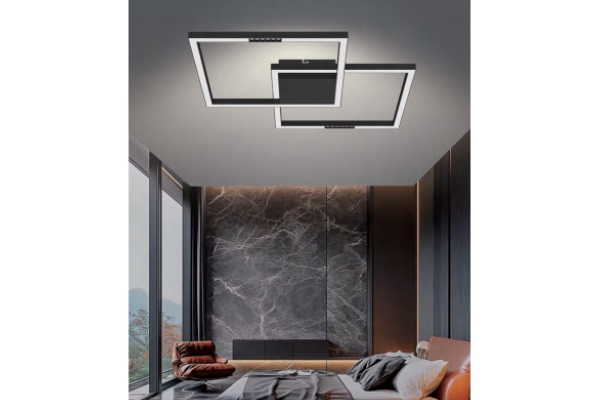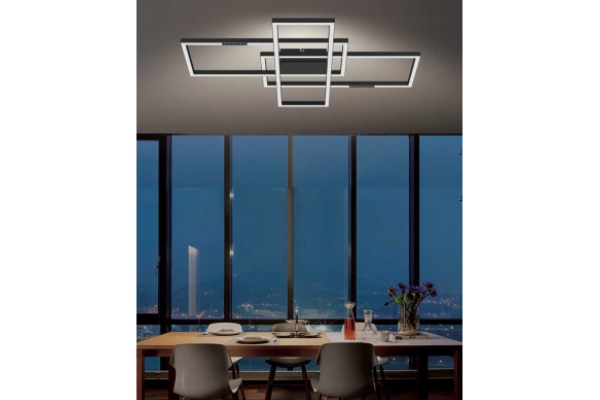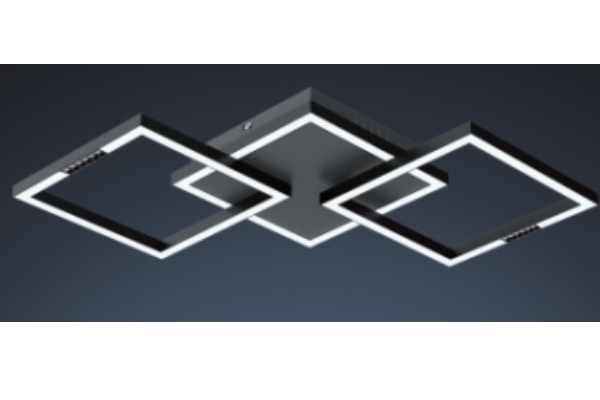How to realize the color temperature adjustable technology of LED ceiling lamp and how to control the dimming accuracy?
Release Time : 2025-09-29
Color temperature tunable LED ceiling lamps achieve dynamic light color adjustment by mixing light sources of different color temperatures. The core principle lies in the independent drive control of multiple LED channels. These lamps typically incorporate two or more independent LED arrays, one corresponding to a warm light (e.g., 3000K) and the other corresponding to a cool light (e.g., 6500K). By adjusting the brightness ratio of the two light sources, the mixed color temperature can be continuously varied. For example, increasing the brightness of the warm light channel shifts the overall light color toward a warm yellow hue; decreasing the brightness of the warm light channel shifts the overall light color toward a cool white hue. This design relies on precise circuit control to ensure that the two light sources remain synchronized and flicker-free during brightness adjustment.
Driver circuit design is crucial for color temperature adjustment. Modern LED ceiling lamps often use dual-channel constant current drivers, providing independent current control for the warm and cool light LED arrays. The driver chip uses PWM (pulse width modulation) technology to adjust the current duty cycle, thereby varying the LED's luminous intensity. For example, when a user sets a color temperature, the system calculates the desired ratio of warm to cool light and dynamically adjusts the duty cycle of the PWM signals for both channels to precisely match the target color temperature. Some high-end products also incorporate closed-loop feedback mechanisms, using color temperature sensors to monitor light output in real time and further adjust driver parameters to improve adjustment accuracy.
Controlling dimming accuracy involves the coordinated optimization of both hardware and software. On the hardware level, the resolution of the driver chip directly impacts the step accuracy of the PWM signal. High-resolution chips can subdivide current regulation into thousands of steps, achieving a smooth transition between color temperature and brightness. On the software level, algorithms handle color temperature coordinate conversion and brightness weighting to ensure that the mixed light color conforms to the trajectory of the standard chromaticity diagram. For example, within the color temperature adjustment range of 2700K to 6500K, the system must map the user-entered color temperature value to a specific brightness ratio between the warm and cool light channels, while avoiding color coordinate shift or a decrease in the color rendering index.
The uniformity of light mixing technology is crucial to light color quality. LED ceiling lamps optimize the layout of their LED arrays to ensure a smooth blend of warm and cool light within a space. Common solutions include alternating LED chips of different color temperatures or using optical elements such as light guides and diffusers to disperse the light. For example, some products alternate warm and cool LEDs and use light guides to reflect the light multiple times, ultimately creating a uniform, mixed light pattern. This design avoids localized color temperature variations and improves overall lighting comfort.
User interaction affects the practicality of color temperature adjustment. Basic LED ceiling lamps often use segmented control, switching between preset warm, neutral, and cool light modes via a switch. Smart models, on the other hand, offer stepless adjustment, allowing users to freely select within a continuous color temperature range (e.g., 2700K to 6500K) via a remote control, mobile app, or voice control. Some products also incorporate scene modes, such as "Reading Mode" which automatically sets a high color temperature and high brightness, and "Leisure Mode" which switches to a lower color temperature, warmer light, further simplifying operation.
The stability of color temperature adjustment depends on power management technology. LED ceiling lamps must ensure that the efficiency and reliability of their driver are not affected by different color temperature combinations. For example, when only the warm light channel is active, the driver must avoid efficiency degradation due to underload. When both channels are active simultaneously, the total power must be prevented from exceeding the specified value and causing overheating. Modern driver circuits dynamically adjust the operating frequency and voltage to maintain efficient and stable operation across the entire color temperature range.
From a practical perspective, color temperature tunable technology significantly enhances the adaptability of LED ceiling lamps. In a home environment, users can adjust the light color based on time of day, activity, or mood: using cool light in the morning to enhance alertness and switching to warm light at night to create a cozy atmosphere. In commercial spaces, such as restaurants or hotels, dynamic color temperature adjustment can also be integrated with branding to enhance the spatial experience. This flexibility transforms LED ceiling lamps from a single lighting tool into a customizable lighting environment solution.







